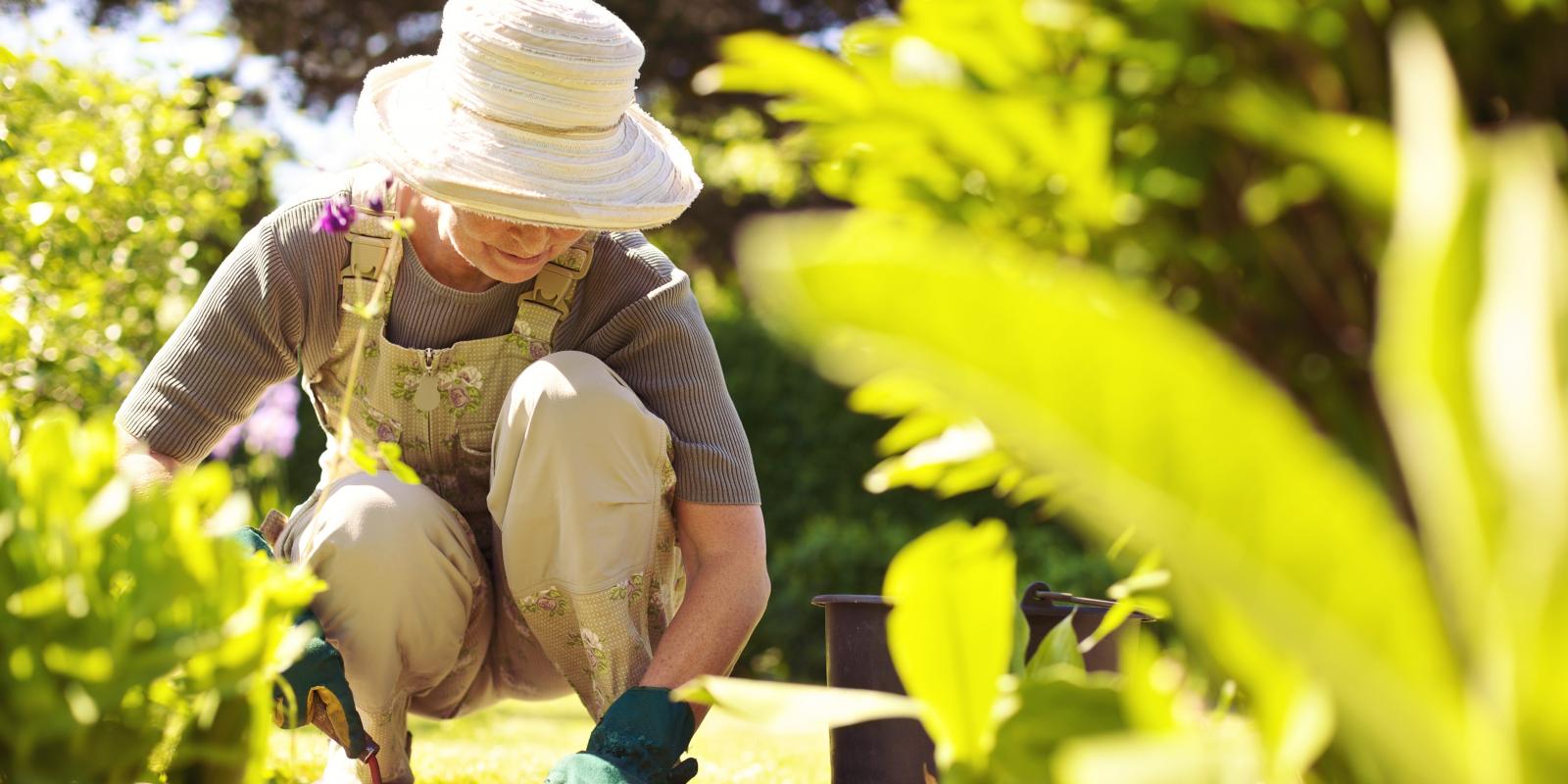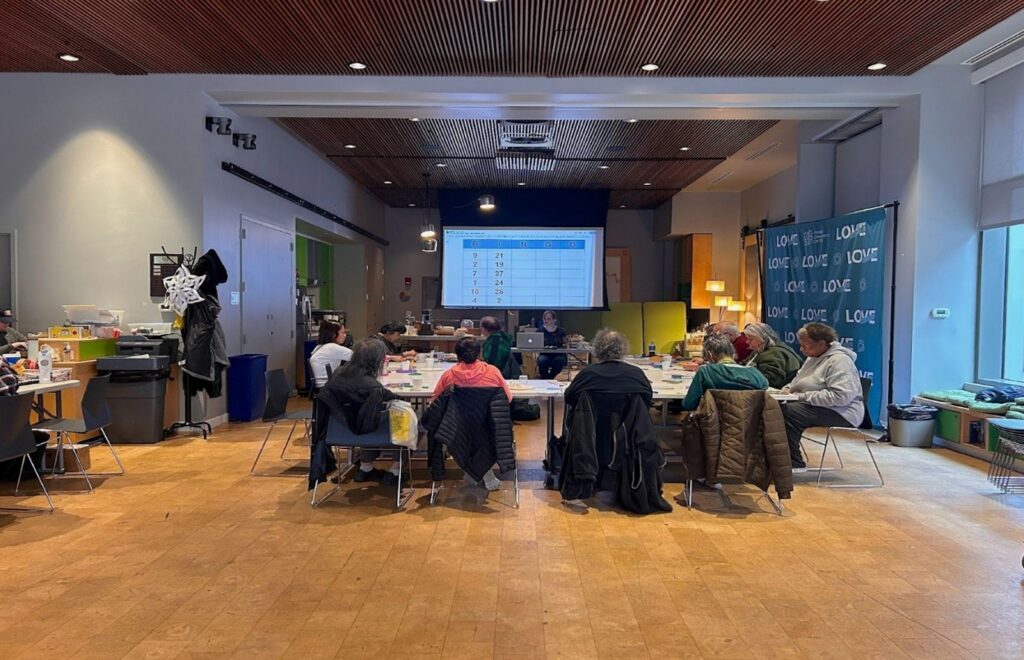Most of us have felt the relaxation and rejuvenation that comes with sitting in a park, walking on a wooded trail, or gazing at a body of water. But as we age, it can become harder to access nature—and its benefits for mental health—due to mobility limitations, living in a care facility, or simply living in a neighborhood that lacks green space.
At Nature Sacred, we have always believed in the healing power of nature and the need to make those benefits accessible to all, particularly in urban and suburban settings. Since 1996, we have put those beliefs into action by supporting the creation of Sacred Places—green spaces that foster mindful reflection and are located within walking distance of the communities they serve. To date, we have supported the creation of more than 100 Sacred Places across the country in hospitals, long-term care facilities, prisons, churches, universities, neighborhoods and anywhere else healing is needed.
While intuitively many recognize the value of nature to our physical and mental health, thanks to decades of research, we now have a firmer grasp and more nuanced understanding of the specific ways in which nature impacts our health. Our research briefing on The Benefits of Nearby Nature in Cities for Older Adults confirmed what many people who work with elders already know—that nature is a crucial tool for helping older adults live vibrant, fulfilling and healthy lives.
A few outtakes from the research include:
“One study assessed well-being and sources of meaning among a racially diverse group of 70+ aged adults. Gardening was important because it connected them to their past and future generations, was a source of memories and social events, and brought opportunities for spiritual healing and therapy.”
“In a study of elderly people, those that had nearby parks, tree-lined streets, and space for taking walks showed higher longevity over a 5-year study period.”
‘Twice-weekly horticultural therapy delayed cognitive deterioration among patients with Alzheimer’s disease.’
“In a long term study, participants going for a daily outdoor walk at age 70 reported significantly fewer new complaints at age 77 concerning musculoskeletal pain, sleep problems, urinary incontinence, and decline in ability to do normal daily activities compared to those who did not go outside daily.”
“Older gardeners are more likely to consume vegetables compared to non-gardeners in their same age group.”
“Gardeners report better health status, improved hand and body strength and flexibility, increased physical functioning, decreased bodily pain, and reduced blood pressure.”
Mental Benefits as Well as Physical
Awareness of the therapeutic benefits of nature dates back to Dr. Benjamin Rush, who is considered one of the founders of American psychiatry. He observed in the early 1800s that gardening had a positive effect on patients with mental illness, which led hospitals throughout the United States to create walking paths and opportunities for gardening on their grounds. The use of horticultural therapy expanded after World War I as a form of psychiatric and occupational therapy for veterans.
According to the CDC, up to 5% of older adults have depression, a number that jumps to 11.5% in older hospitalized patients and to 13.5% in elders who require home healthcare. And up to 90% of older adults have experienced at least one traumatic event, such as military combat, the unexpected death of a loved one or a serious injury or illness, putting them at risk for PTSD. Additionally, transfer trauma can affect elders when they have to move from their home to a long-term care facility or hospital, particularly for older adults who have dementia, can’t participate in the decision to move, and struggle to assimilate new information.
A growing body of research continues to show substantial mental health benefits from spending time in nature for all populations, with many studies focusing on older adults. A 2007 study showed that a garden walking program with reflective journaling significantly reduced depression levels in older adults. Another study found that twice-weekly horticultural therapy delayed cognitive deterioration among patients with Alzheimer’s disease.
Of course, the mental and emotional benefits of spending time in nature also overlap with the physical and social benefits. Green spaces are correlated with more social interaction, which is associated with lower rates of depression and cognitive impairment in older adults.
‘Researchers are using the site to study how nature can help treat conditions like PTSD and traumatic brain injury.’
What’s more, one doesn’t have to enjoy nature to gain the benefits of being outside, according to Marc Berman, a psychologist at the University of Chicago who studies the relationship between psychology, neurology and the environment.
“One of the surprising findings that we have in our research is that you don’t actually have to enjoy the nature interaction to get the memory and attention benefits,” he said.
At Nature Sacred, we’ve observed the healing powers of nature for older adults at a Sacred Place called Timeless Season in the Sun at Piedmont Health Care Center in Piedmont, Ala., which provides skilled nursing, memory care, independent living and rehabilitation. The park encourages rest and reflection with plants, benches, an accessible path and two large sundials representing the constant movement of time and seasons.
Dr. Benjamin Ingram, President of Piedmont Healthcare Authority in Piedmont, who oversees the Center, said that spending time in the garden “enhances residents” social and emotional well-being.”
We’ve witnessed the same dynamic in a Washington, DC, neighborhood just blocks from the U.S. Capitol building. Here, 250 older adults with lower income and individuals with disabilities live in a community that supports its residents in acquiring basic needs of food, housing, adequate healthcare and human dignity. A Sacred Place here includes raised garden beds filled with flowers and vegetables available for neighbors to enjoy.
Nature Sacred also has helped study how nature can assist veterans as they heal from trauma at The Green Road, our Sacred Place at Walter Reed National Military Medical Center in Bethesda, Md. The Green Road includes an accessible trail through a forest where veterans can recover from the physical and psychological wounds of war. Researchers are using the site to study how nature can help treat conditions like PTSD and traumatic brain injury, paving the way for a more holistic approach to healthcare in the military. A 2021 study found that walking on the Green Road “significantly decreased distress and increased mindfulness” compared to walking on an urban road.
Increased Access to Nature a Clear Goal
With such a clear case for nature’s capacity to heal, it falls on all of us to consider how we can increase access to nature for all older adults. For elders living in the community, we need to create nearby parks that are convenient to access, particularly in economically disadvantaged neighborhoods that have traditionally had less green space. It would benefit everyone if we were intentional about creating natural spaces in all hospitals and care facilities—situations in which people most need healing.
In addition to proximity, we need to ensure green spaces are accessible to elders with disabilities. Level walking paths with good traction and handrails and seating with shelter from the sun and rain can make enjoying nature more comfortable. “Enabling gardens” offer adaptive tools like raised beds so people with physical limitations can enjoy gardening, and “wander gardens” are enclosed spaces that promote independence while ensuring the safety of users with cognitive impairments as they enjoy the outdoors.
It is never too late to heal from trauma, depression and mental illness. When we make it easier to connect with nature, we give elders a powerful tool to heal and thrive.
Alden E. Stoner is the CEO of Nature Sacred in the Washington, DC/Baltimore area.
Photo credit: Shutterstock/Jacob Lund













